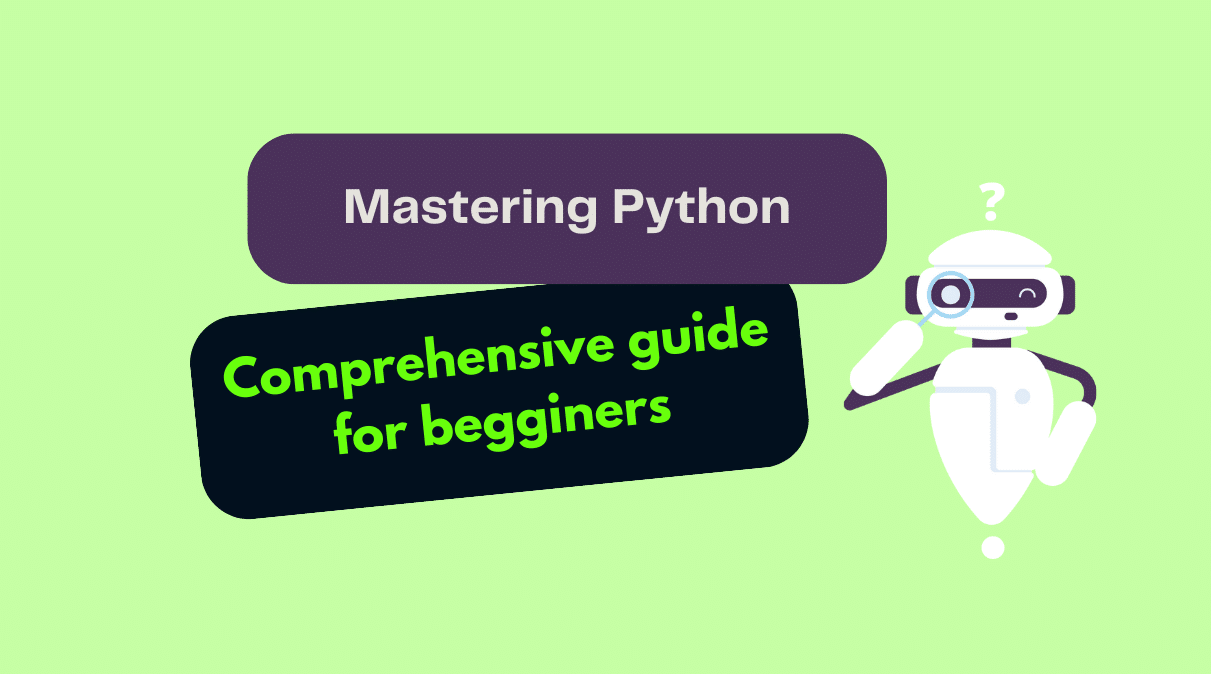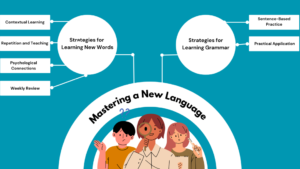Are you eager to delve into the world of Python programming and unlock its full potential? Python has been rapidly gaining popularity, becoming a cornerstone in fields like data science and web development. Mastering Python is not just a skill; it’s a gateway to endless possibilities for beginners.
With Python’s versatility and user-friendly syntax, beginners can swiftly grasp the fundamentals and progress efficiently. The step-by-step guide I’m about to unveil will navigate you through the intricate yet rewarding journey of mastering Python. Whether you aspire to excel in data science, web development, or automation, Python is the tool you need in your arsenal.
This comprehensive guide is tailor-made for beginners, offering a structured approach to mastering Python from the ground up. Each step is designed to build upon the previous one, ensuring a solid foundation and empowering you to tackle real-world challenges with confidence. Let’s embark on this transformative journey together and unleash the full potential of Python in your skill set.
Versatility and Popularity of Python
Python, often dubbed as the Swiss Army knife of programming languages, holds a significant place in the tech world due to its remarkable versatility and widespread popularity. When delving into the realms of web development, data science, artificial intelligence, and automation, Python emerges as a top choice for developers worldwide. Its flexibility in adapting to various statistical and machine learning models makes it a go-to language for data enthusiasts. Additionally, Python’s application spans across a wide array of domains, making it a pinnacle of versatility in the programming landscape.
With Python’s adaptability demonstrated in diverse fields such as web development, data science, machine learning, and automation, its reputation as a versatile language continues to soar. From powering websites and applications to driving complex data analysis and AI algorithms, Python excels in meeting the demands of modern tech environments. Developers leverage Python’s simplicity and readability to create efficient solutions across different domains, solidifying its position as a preferred programming language for a multitude of applications.
In the competitive landscape of programming languages, Python stands out for its comprehensive support in various sectors, including data science, AI, and automation. It has become the cornerstone of many cutting-edge technologies, acting as a catalyst for innovation and advancement in the digital era. Embraced by professionals and enthusiasts alike, Python’s versatility remains unmatched, allowing individuals to explore and excel in diverse fields with ease.
Career Opportunities for Python Developers
The growing demand for Python skills in the job market presents a plethora of rewarding career opportunities for aspiring developers. Companies across industries seek professionals proficient in Python to drive innovation, streamline processes, and unlock insights from data. As organizations harness the power of data analytics, artificial intelligence, and automation, the need for skilled Python developers continues to escalate.
Python developers find themselves in high demand across a spectrum of job roles, ranging from data scientists and software developers to machine learning engineers. These roles not only offer competitive salaries but also provide avenues for continuous learning and professional growth. With Python’s prominence in critical technologies like AI and data science, developers equipped with Python expertise are well-positioned to navigate the dynamic tech landscape and carve out successful careers.
In today’s digital economy, Python skills open doors to a multitude of opportunities, empowering individuals to contribute meaningfully to groundbreaking projects and innovations. Whether aspiring to delve into data analysis, machine learning, or web development, mastering Python serves as a gateway to a world of exciting career prospects. As industries embrace digital transformation, the role of Python developers becomes increasingly pivotal in driving technological advancements and shaping the future of tech-driven initiatives.
Getting Started with Python
Python is a versatile and powerful programming language that is ideal for beginners and experienced developers alike. In this section, I will guide you through the fundamental steps to get started with Python, from installing the language to understanding its syntax and basics.
Installing Python and Setting Up the Environment
To begin your Python journey, you first need to install Python on your system. You can download the latest version of Python from the official website and follow the installation instructions based on your operating system. Installing Python is straightforward and allows you to access a wide range of libraries and tools that Python offers.
Once Python is installed, it’s essential to set up your development environment. You can choose from various Integrated Development Environments (IDEs) such as PyCharm or Jupyter Notebook. These IDEs provide a user-friendly interface and useful features to write and execute Python code efficiently. Setting up your environment ensures a seamless coding experience and enables you to experiment with Python easily.
Introduction to Python Syntax and Basics
After setting up your environment, it’s time to delve into Python syntax and basics. Python is known for its readability and simplicity, making it an excellent choice for beginners. You will learn about essential concepts such as variables, data types, loops, and conditionals.
Variables in Python are used to store data values that can be manipulated throughout your code. Understanding different data types like integers, strings, lists, and dictionaries is crucial for effective Python programming. Loops, including for loops and while loops, allow you to iterate over data efficiently. Conditionals such as if statements help control the flow of your program.
By exploring Python syntax and basics, you will build a strong foundation for mastering Python and tackling more advanced topics in the future. Practice writing code snippets and experimenting with different concepts to reinforce your understanding of Python’s core principles.
Begin your Python journey by installing Python, setting up your environment, and mastering the fundamental syntax and basics. Embrace the simplicity and elegance of Python as you embark on this exciting programming adventure.
For more in-depth insights into mastering Python basics, you can explore additional resources such as Mastering Python: A Comprehensive Guide to Python Basics, which provides a solid foundation for Python learners.
Mastering Python Fundamentals
Python is a powerful programming language that offers a wide range of functionalities to its users. Understanding the fundamental concepts of Python is crucial for mastering the language and improving your coding skills.
Functions and Modules in Python
In Python, functions play a vital role in code organization and reusability. Functions are blocks of code that perform a specific task and can be called multiple times within a program. They help in breaking down complex tasks into smaller, more manageable chunks. Modules, on the other hand, are individual files that contain functions, variables, and classes. They allow you to organize your Python code logically and efficiently. By using modules, you can structure your program into reusable components, making your code easier to maintain and understand.
When creating functions in Python, you define them using the def keyword followed by the function name and parameters. Here’s an example of a simple function that adds two numbers:
def add_numbers(a, b):
return a + b
Importing modules in Python is simple and allows you to use functions and variables defined in other files. You can import a module using the import keyword followed by the module name. For example, to import the math module and use the sqrt function:
import math
print(math.sqrt(16))
For further exploration on Python modules, you can refer to Python Modules for detailed documentation.
Working with Data Structures in Python
Python offers built-in data structures such as lists, tuples, dictionaries, and sets that enable you to store and manipulate data efficiently. Lists are versatile and mutable, allowing you to add, remove, and modify elements. Tuples are immutable sequences typically used for fixed collections of items. Dictionaries store key-value pairs that facilitate fast data retrieval, while sets are unordered collections of unique elements.
Manipulating data structures in Python involves performing operations like accessing elements, adding or removing items, and iterating through the structure using loops. By mastering data structures, you can enhance your ability to store and manage data effectively in your Python programs.
To delve deeper into Python data structures, explore Python Data Structures: Lists, Dictionaries, Sets, and Tuples for comprehensive insights.
Handling Exceptions and Errors
Error handling is a crucial aspect of Python programming that helps in dealing with unexpected issues that may arise during code execution. Exceptions are Python’s way of signaling errors, and handling them gracefully improves the robustness of your code. By using try and except blocks, you can anticipate potential errors and respond to them appropriately.
Implementing best practices for error handling involves identifying specific exceptions, providing informative error messages, and ensuring your program continues to run smoothly even when errors occur. By mastering error-handling techniques, you can write more robust and reliable Python code that effectively handles various scenarios.
For a more in-depth understanding of exception handling in Python, you can check out Python Exception Handling for detailed guidance.
Advanced Python Concepts
Python offers a plethora of advanced concepts that can elevate your coding skills and expand your Python proficiency. As I delve into the realm of Advanced Python Concepts, let’s explore some fundamental pillars that form the backbone of Python programming.
Object-Oriented Programming (OOP) in Python
Object-Oriented Programming (OOP) is a key paradigm in Python that revolves around the concept of objects, classes, inheritance, and polymorphism. Understanding OOP principles is crucial for mastering Python. Let’s take a closer look at some of the core OOP concepts:
- Classes and Objects: In Python, classes are blueprints for creating objects. Objects are instances of classes that encapsulate data and behavior. By defining classes and creating objects, you can organize your code in a structured and reusable manner.
- Inheritance: Inheritance allows a class to inherit attributes and methods from another class. This concept promotes code reusability and helps in building hierarchical relationships between classes.
- Polymorphism: Polymorphism enables objects to be treated as instances of their parent class. This concept allows for flexibility in implementing different behaviors based on the object being operated upon.
Working with Libraries and Frameworks
Python’s extensive library ecosystem empowers developers to leverage pre-built functionalities and accelerate the development process. Here are some popular Python libraries and frameworks that you should explore:
- NumPy: NumPy is a fundamental library for scientific computing in Python. It provides support for high-level mathematical functions and multi-dimensional arrays, making it essential for data manipulation and analysis.
- Pandas: Pandas is a versatile data manipulation library that offers data structures like DataFrames and Series. It simplifies tasks related to data cleaning, transformation, and analysis, making it indispensable for working with structured data.
- Django: Django is a robust web framework that follows the Model-View-Template (MVT) architectural pattern. It streamlines web development by providing built-in functionalities for URL routing, authentication, and database management.
Implementing File Handling and I/O Operations
File handling and Input/Output (I/O) operations are fundamental aspects of Python programming. By mastering file operations, you can manipulate external files and interact with various types of data. Let’s delve into essential concepts related to file handling in Python:
- Reading and Writing Files: Python offers mechanisms to read data from files using input streams and write data back using output streams. Understanding file modes and file objects is crucial for efficient file operations.
- File Modes: File modes dictate the behavior of file operations in Python. Common file modes include ‘r’ for reading, ‘w’ for writing, and ‘a’ for appending. Choosing the appropriate file mode ensures the desired operation on files.
By grasping these Advanced Python Concepts, you can elevate your programming skills and confidently embark on more complex projects. Embrace these pillars of Python knowledge to become a proficient Python developer.
Building Projects and Real-World Applications
Embarking on mastering Python is not just about learning syntax and functions; it’s about applying your knowledge to real-world scenarios. Building projects and real-world applications is a crucial step in solidifying your Python skills. Let’s dive into creating practical projects that will enhance your understanding.
Creating a Simple Web Application with Flask
One exciting way to kickstart your Python project journey is by building a simple web application using the Flask framework. Flask is a lightweight and versatile web framework that is ideal for beginners. To begin, set up routes in Flask to define how the application responds to different URLs. By creating templates, you can design the look of your web pages easily. Handling requests in Flask involves processing data sent from the client and returning the appropriate response. By mastering these fundamentals, you can create dynamic web applications that interact with users effectively.
Developing a Data Analysis Tool with Pandas
Data analysis is a crucial skill in today’s data-driven world, and Python offers powerful tools like Pandas to help you dive into data effortlessly. To develop a data analysis tool with Pandas, start by loading data from various sources such as CSV files or databases. Once loaded, Pandas allows you to perform operations like filtering, sorting, and aggregating data with ease. Visualizing results is made simple with Pandas’ integration with libraries like Matplotlib or Seaborn, enabling you to create insightful charts and graphs. By mastering Pandas for data analysis, you unlock the potential to derive valuable insights from datasets and make data-driven decisions effectively.
By engaging in hands-on projects like building web applications with Flask and data analysis tools with Pandas, you not only enhance your Python skills but also gain practical experience that will be invaluable in your journey to mastering Python. Experiment, explore, and unleash your creativity to bring your Python projects to life.
Mastering Python Best Practices
Understanding and implementing best practices is crucial for mastering Python and writing efficient and maintainable code. Let’s delve into two key areas that can significantly elevate your Python programming skills.
Writing Clean and Readable Code
One fundamental aspect of mastering Python is writing clean and readable code. By adhering to the PEP 8 guidelines, the official style guide for Python code, you can ensure consistency and clarity in your programming projects. Following these guidelines not only enhances the readability of your code but also makes it easier for you and others to understand and maintain it.
Here are some tips to improve the readability of your Python code:
- Use Descriptive Variable Names: Opt for meaningful variable names that reflect the purpose of the variable.
- Consistent Indentation: Maintain consistent indentation to enhance code structure and readability.
- Limit Line Length: Keep lines of code within a reasonable length to prevent horizontal scrolling and improve readability.
- Comment Your Code: Add comments to explain complex logic or the purpose of specific code segments for better understanding.
By incorporating these practices into your coding workflow, you can write code that is not only functional but also clean, organized, and easy to follow.
Testing and Debugging in Python
Testing your code and debugging potential errors are essential components of the software development process. In Python, there are various tools and techniques available to streamline the testing and debugging process, ensuring the reliability and stability of your applications.
Importance of Testing: Testing your Python code helps identify bugs, errors, and edge cases early in the development cycle, reducing the likelihood of issues surfacing in production. It also validates the functionality of your code and ensures that it behaves as expected across different scenarios.
Debugging Techniques: When troubleshooting issues in Python code, tools like unittest and pytest can be invaluable. These frameworks provide functionalities for writing and running tests, identifying failures, and debugging code effectively. By utilizing these tools, you can automate the testing process and efficiently pinpoint and resolve errors in your codebase.
Incorporating robust testing practices and effective debugging techniques into your Python development workflow can lead to more resilient and high-quality software solutions.
By focusing on writing clean and readable code while emphasizing testing and debugging procedures, you can elevate your Python programming skills and master the art of efficient and reliable code creation.
Conclusion
Mastering Python is not just about learning a programming language; it’s about embarking on a journey of endless possibilities and creativity. Throughout this guide, we’ve discussed the fundamental steps for beginners to become proficient in Python. Remember, consistent practice is key to solidifying your skills and gaining confidence in your coding abilities.
Exploring real-world projects will not only sharpen your problem-solving skills but also provide valuable hands-on experience. Don’t hesitate to dive into different Python projects, as each one will teach you something new and broaden your understanding of the language.
Lastly, contributing to the Python community is a fantastic way to continue learning and growing. Engage with fellow Python enthusiasts, share your knowledge, and stay updated on the latest trends and advancements in the Python world. By fostering a sense of community, you’ll find inspiration and support to push your Python skills to new heights.
So, embrace the Python journey with passion, dedication, and a curious mindset. Remember, mastering Python is not a destination; it’s a lifelong adventure filled with learning and growth. Happy coding










